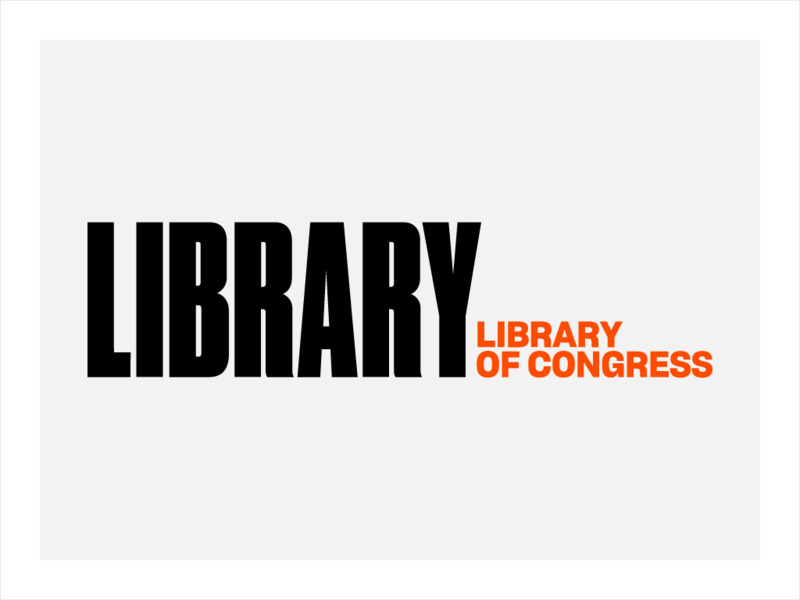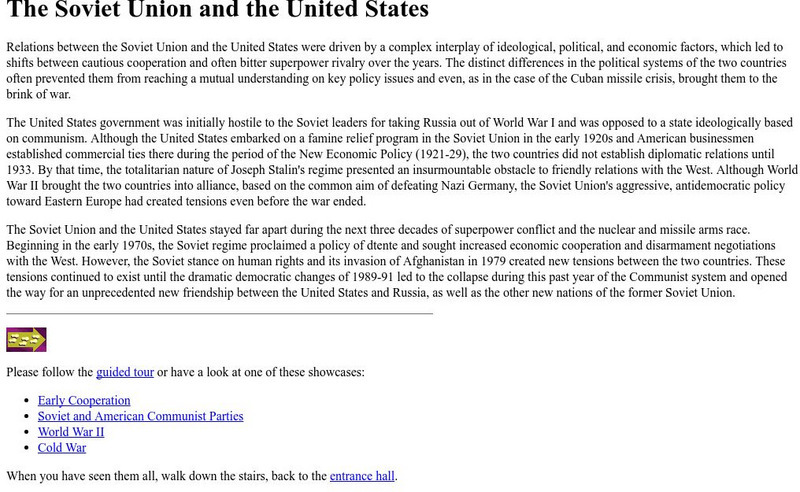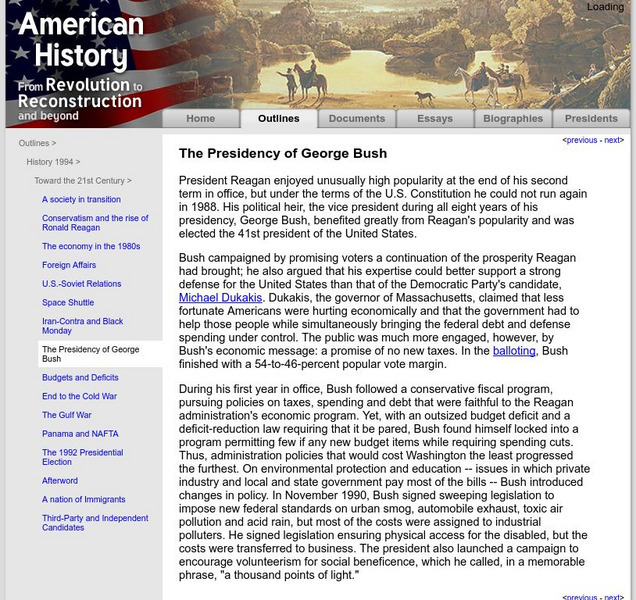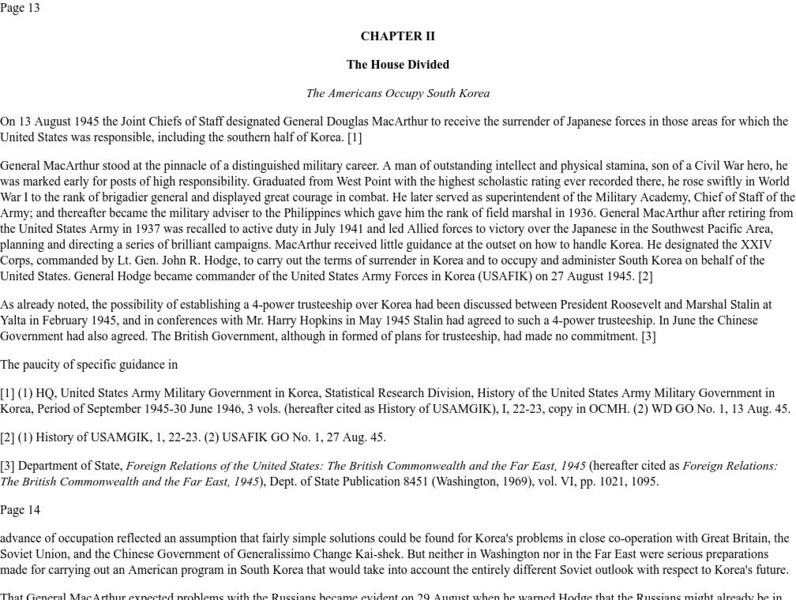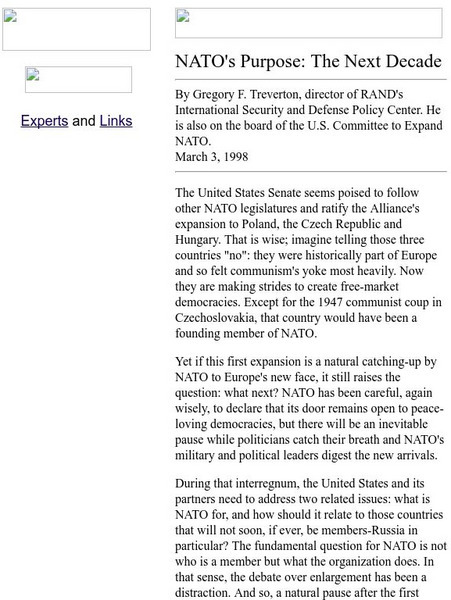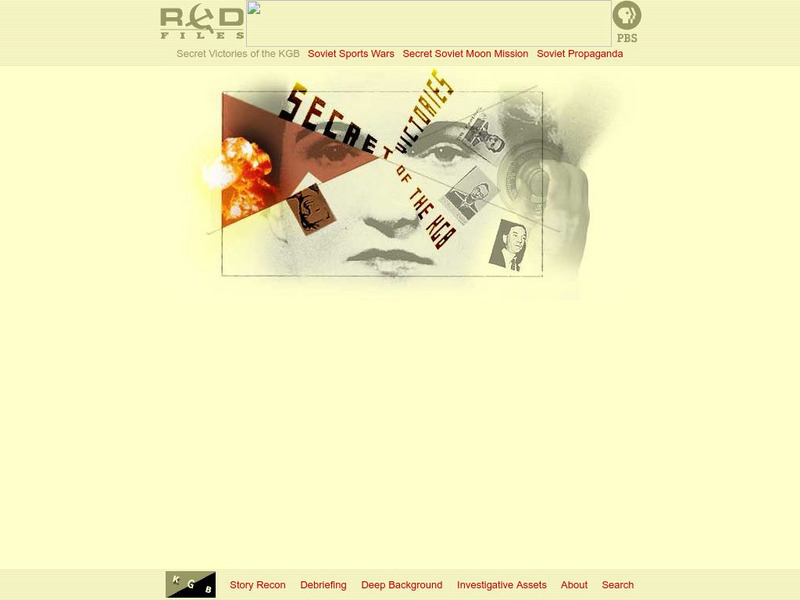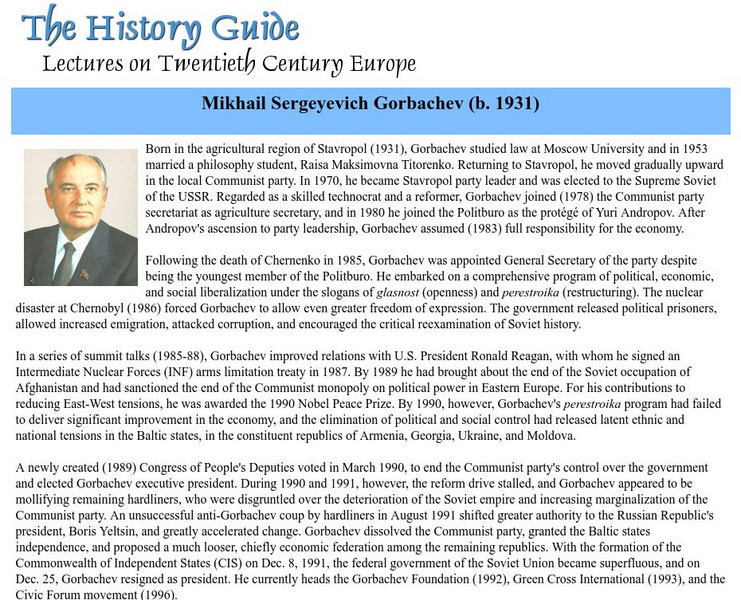Khan Academy
Khan Academy: Start of Cold War, Part 2: Truman Doctrine and Marshall Plan
Explains President Truman's plan to contain communism, which signaled the end of American isolationism. Also discusses America's pledge of financial aid to rebuild Europe with the Marshall Plan.
Khan Academy
Khan Academy: Start of Cold War, Part 3: Berlin Airlift and Creation of Nato
Discusses the Berlin airlift, NATO, and the National Security Act.
Library of Congress
Loc: Cold War Cuban Missile Crisis
This site details the placing of intermediate-range nuclear missiles in Cuba by the Soviet Union. The article discusses why Khrushchev did this, and what the U.S. did about this. Also provided is the text to Krushchev's letter to JFK...
Khan Academy
Khan Academy: Us History: Period 9: 1980 Present: The Gulf War
Learn about how the United States led a UN coalition to liberate Kuwait from Iraq in 1991.
Siteseen
Siteseen: American Historama: Cold War Events (1948 1955)
This article contains a summary and definition of the main Cold War events from 1948 - 1955.
University of Virginia
Miller Center at Uva: Presidential Speeches: Radio Report to the American People on Postdam Conference
Read the speech President Harry Truman gave to the American public upon his return from the Potsdam Conference in August, 1945, following the surrender of Germany.
Khan Academy
Khan Academy: The Presidency of Ronald Reagan, Pt. 2: Foreign Policy
Under President Reagan, the Cold War began to thaw and trouble brewed in the Middle East. Learn about Reagan's foreign policy initiatives by perusing this summary, reading an excerpt from his "Evil Empire" speech, answering thought...
ibiblio
Ibiblio: The Soviet Union and the United States
This site from ibiblio.org gives information about the historical relationship between the Soviet Union and the United States. After reading the summary on this page, click on the links at the bottom of the page to read about early...
BBC
Bbc: The Story of Africa: Collapse of Apartheid
Part of the BBC's The Story of Africa, this page explores the collapse of apartheid with quotes, images, audio files, and speeches by Nelson Mandela. Click on the links on the left to learn more about South Africa, Apartheid, the Cold...
University of Groningen
American History: Outlines: The Presidency of George Bush
This site has information about the election and presidency of George H.W. Bush. Links within the text go to other pages with information.
Ducksters
Ducksters: The Cold War for Kids: Chinese Civil War
Kids learn about the history of the Chinese Civil War. Fight between the communists led by Mao Zedong and the nationalists.
Ducksters
Ducksters: The Cold War for Kids: Korean War
Kids learn the history of the war fought between North Korea and South Korea with the United States, China, and the Soviet Union.
Ducksters
Ducksters: The Cold War for Kids: Yom Kippur War
Kids learn the history of the Yom Kippur War when Egypt and Syria attacked Israel. Israel fought back.
US Army Center
U.s. Army Center of Military History: Chapter Ii: The House Divided
This resource provides information on the period in Korea just before the Korean War, and on the partition of Korea by the United States and the Soviet Union.
US Army Center
U.s. Army Center of Military History: The u.s. Army in Vietnam
This site gives an in-depth look at the U.S. Army action during the Vietnam War. To find more information about Diem's overthrow, look under the section labeled 635.
University of Maryland
Voices of Democracy: John F. Kennedy, "Address: "The President and Press" 1961
Read President John F. Kennedy's speech, "The President and the Press," which he delivered before the American Newspaper Publishers Association (ANPA) on April 27, 1961. In this speech, he attempted to explain and justify the Bay of Pigs...
Ducksters
Ducksters: World War Ii for Kids: After Wwii Post War
Kids learn about the history of what happened after World War II. How Europe and Japan recovered. Post war, plus the start of the Cold War.
Wikimedia
Wikipedia: Allied Plans for German Industry After World War Ii
This site discusses the Allies' industrial plans for Germany during the Cold War.
Other
Cvce: Dismantling List for the Western Allied Forces (19 October 1947)
This primary source document discusses the dismantling of industries in Germany during the Cold War.
A&E Television
History.com: The Mariel Boatlift: How Cold War Politics Drove Thousands of Cubans to Florida in 1980
After Fidel Castro loosened emigration policies, some 125,000 Cubans landed on U.S. shores over a span of five months. The Mariel Boatlift of 1980 was a mass emigration of Cubans to the United States. The exodus was driven by a stagnant...
A&E Television
History.com: The Mariel Boatlift: How Cold War Politics Drove Thousands of Cubans to Florida in 1980
After Fidel Castro loosened emigration policies, some 125,000 Cubans landed on U.S. shores over a span of five months. The Mariel Boatlift of 1980 was a mass emigration of Cubans to the United States. The exodus was driven by a stagnant...
Boston University
Nato's Purpose: The Next Decade
An article explaining what NATO's purpose should be now that the Cold War has ended.
PBS
Pbs Teachers: Secret Victories of the Kgb
Explore the role of espionage in wartime and investigate Soviet spy activities during the Cold War. Trace the history of the atomic bomb and explore Soviet activities in stealing nuclear secrets during the Manhattan Project.
Steven Kreis, PhD
The History Guide: Mikhail Sergeyevich Gorbachev
Biographical account of Mikhail Sergeyevich Gorbachev, reformer of the Soviet Union. Includes information regarding Gorbachev's ascension to power with the Communist Party of the Soviet Union and his role in reducing the Cold War...
Other popular searches
- Events of the Cold War
- End of the Cold War
- Eisenhower and the Cold War
- Origins of the Cold War
- The Cold War 1945 1963
- The Cold War Era
- Causes of the Cold War
- Cold War in the u.s.
- Cold War in the Us
- China and the Cold War
- Cold War Around the World
- Roots of the Cold War


